Cutting fireclay
It is really easy with these tools.
Fireclay bricks can be processed with a variety of machines. But which tool is best suited when? Below you will find an overview.
Would you prefer to watch a video instead of reading the following text? Then take a look at our linked YouTube video.
Basically, all our fireclay bricks and plates – i.e. all qualities: HBO+, WKS and also the heavy fireclay HSM – are characterized by good workability. Many tools can thereby be used:
You are currently viewing a placeholder content from YouTube. To access the actual content, click the button below. Please note that doing so will share data with third-party providers.
More InformationWet cutting machine
Many stove fitters like to work with a wet cutting machine to keep the amount of dust generated during cutting to a minimum. Thanks to its large contact surface, it can also be used to cut large plates or shaped bricks.
On the other hand, the machine is a considerably large and can’t easily be packed into a trouser pocket. However, it may pay off to transport it to the construction site, especially for larger projects. It also scores points for its fast cutting speed and precision. Equipped with a diamond blade, it creates smooth cuts and fine strips.
As the use of water during sawing can cause dirt, it is mainly installed outdoors. The light dust sludge that accumulates on the bricks during cutting should also always be washed off before further processing so that the mortar adheres well later. If you are not a fan of this machine, you will find many alternatives for dry cutting below.
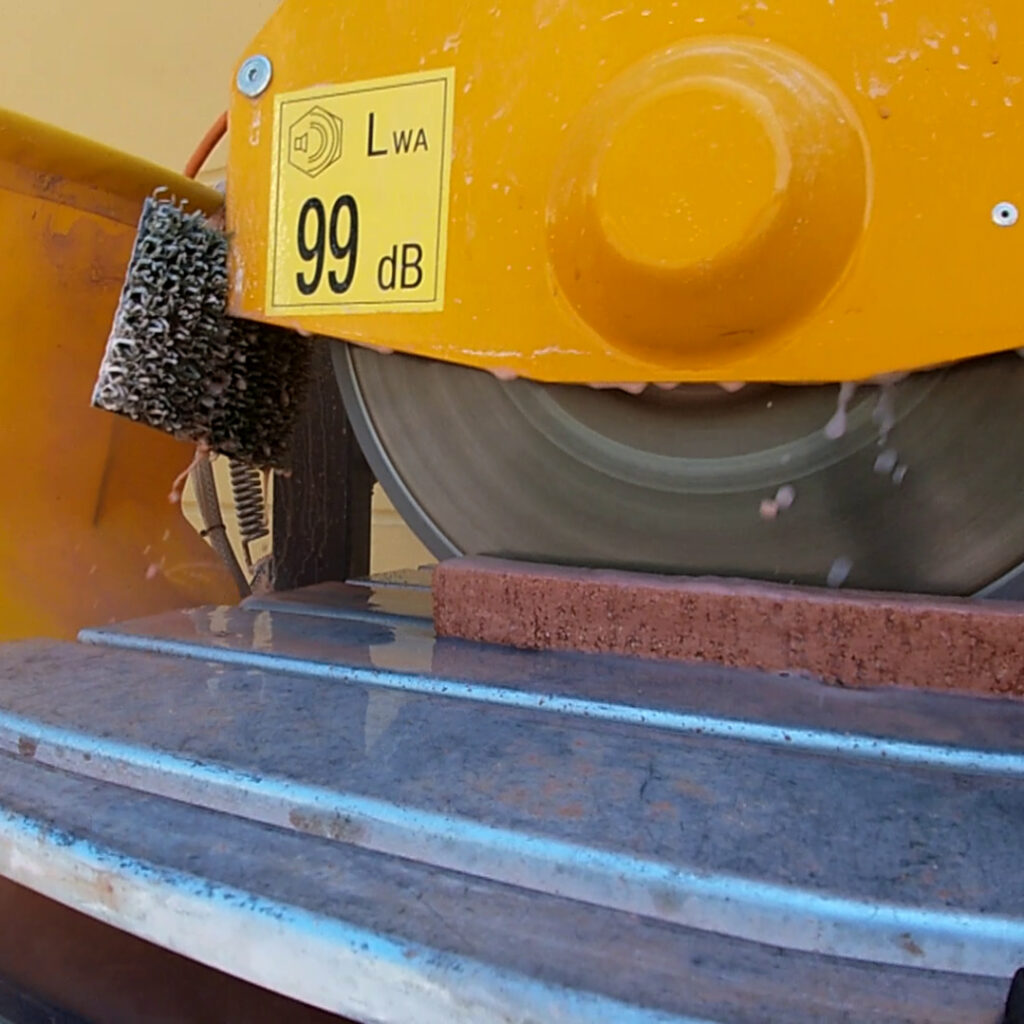
Chop saw
The dry cutting tool we recommend most often is the chop saw. Equipped with a diamond blade and an automatic extraction system, it achieves clean cuts.
Compared to wet-cut material, dry processing has the advantage, as mentioned above, that the fireclay does not have to be washed off. It is sufficient to wipe off the sawdust with a damp cloth.
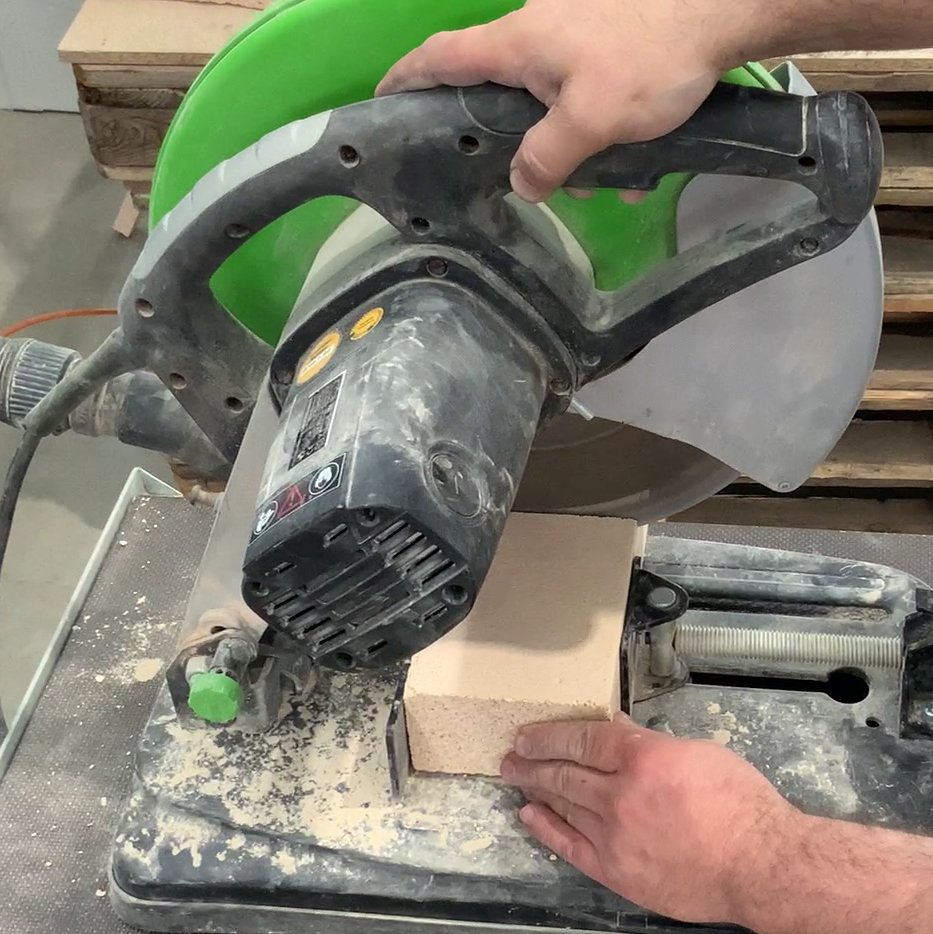
Plaster crack
If you want to cut a fireclay brick quickly and, above all, quietly, the plaster cracker is very suitable.
It is quickly set up and can easily handle plates up to 6 cm thick. Nevertheless, the plaster crack is a compact tool that is more suitable for smaller formats. Depending on the size of the plaster crack, you are limited to its width. We like to work with it for plates up to 40 cm. For larger formats, however, we prefer to use other tools.
The cut surface naturally becomes somewhat coarser with the crack. Accordingly, this processing method makes it more difficult to cut very fine strips of less than 2 cm. However, the rough edges have the advantage that the mortar adheres better.
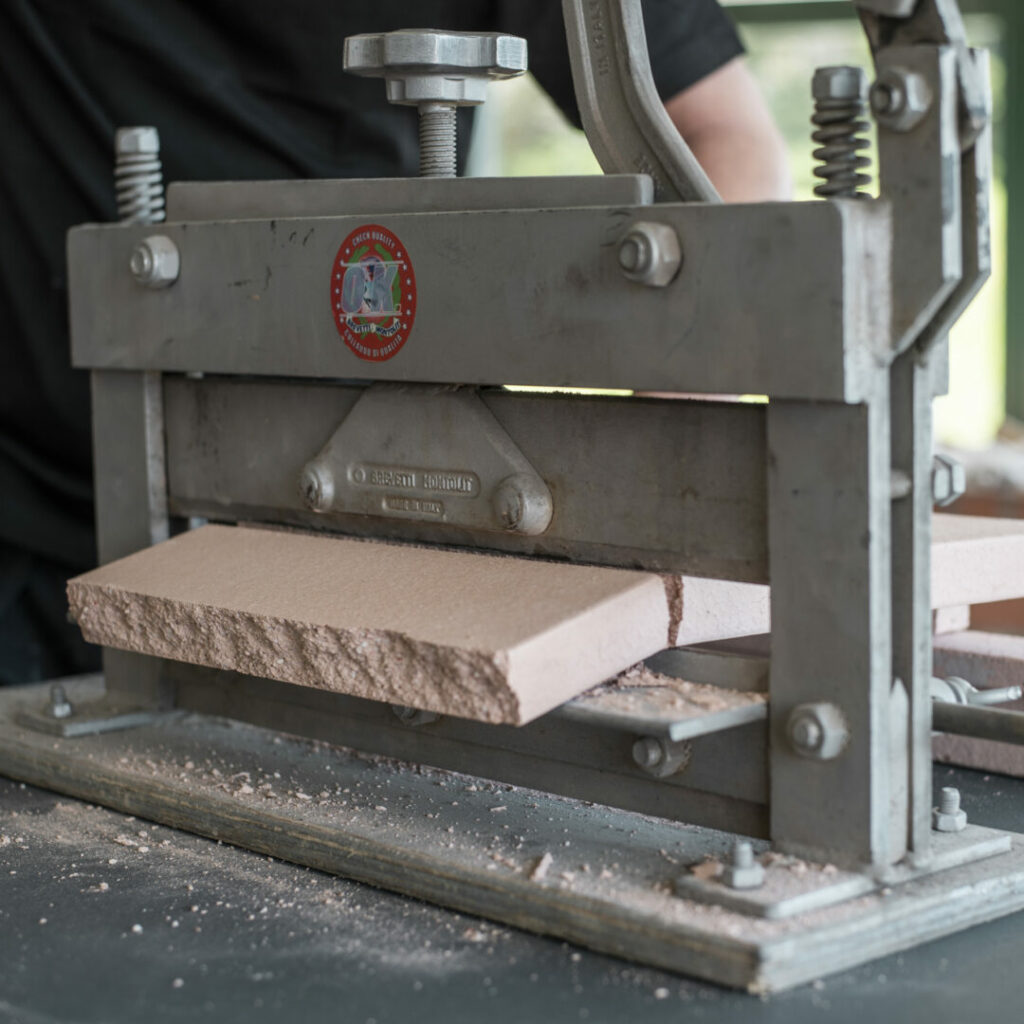
Plunge saw
Another tool we can recommend is the plunge saw.
It has the special feature that you can adjust exactly how deep it cuts. It is therefore possible that the material is not sawn all the way through, but leave 1-2 mm. This can be used to protect the work table or to cut grooves.
Thanks to the guide rail on the device, even large plates can be cut precisely with this small and lightweight tool.
A diamond blade should also be used here. And it is also advisable to work with an extraction system to minimize dust right from the start.
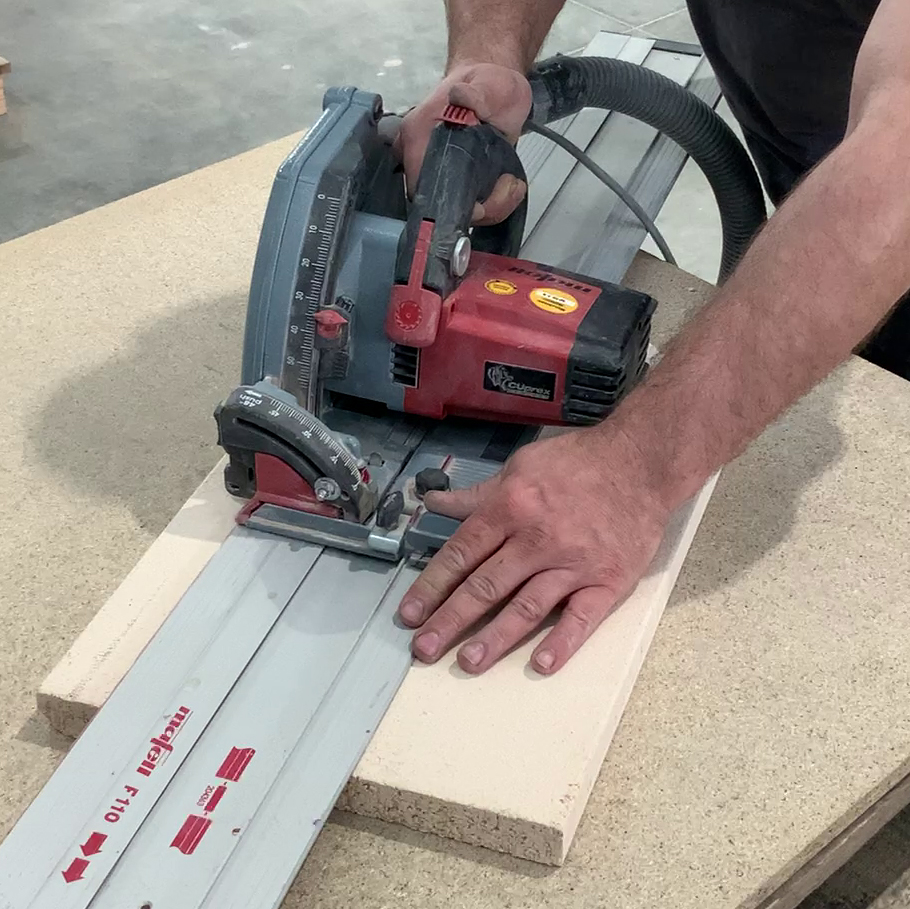
Angle grinder
You are probably familiar with the well-known and very universal angle grinder.
Due to its flexibility, it is the tool of choice when it comes to curves or incisions.
Diamond blades should also be used here. The disadvantage of the angle grinder is that the work causes a lot of dust.
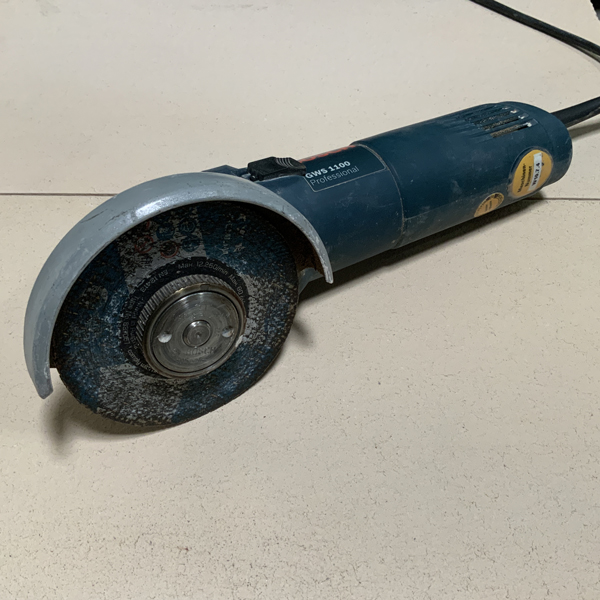
Reciprocating saw
A rather exotic tool is the reciprocating saw (the electric “foxtail”). However, we still like to work with it. It’s a little insider tip, especially when we need to rework something:
If a brick has already been used, but then needs to be cut again, you can do this easily with a foxtail. And equipped with a carbide blade, it also produces a clean cut.
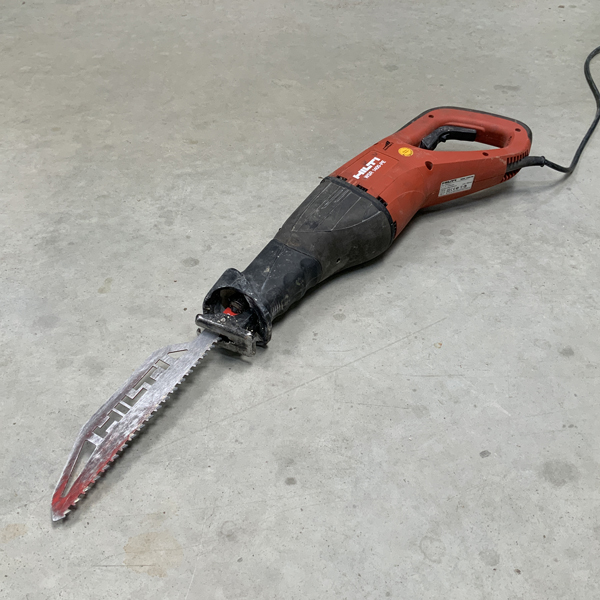
Last but not least: innovative dry table saw from iQ Power Tools
Even if dry cutting is carried out with an extraction system, dust can never be completely avoided. However, a new technology from the manufacturer iQ Power Tools – a 3-stage cyclone high-performance suction system – now manages to reduce dust generation by up to 99.5 % and thus to an unprecedented minimum.. The table saw The iQMS362 from iQ Power Tools incorporates this technology, making it the world’s first 420mm bench-top dry saw that is nearly dust-free.
The saw also belongs to the absolute top class even in other respects: thanks to its compact design with folding mechanism, it can be easily transported to the construction site by just one person. It also impresses with its precise cuts and high cutting speed.
We can therefore thouroughly recommend this machine, even if such an innovation naturally has its price.
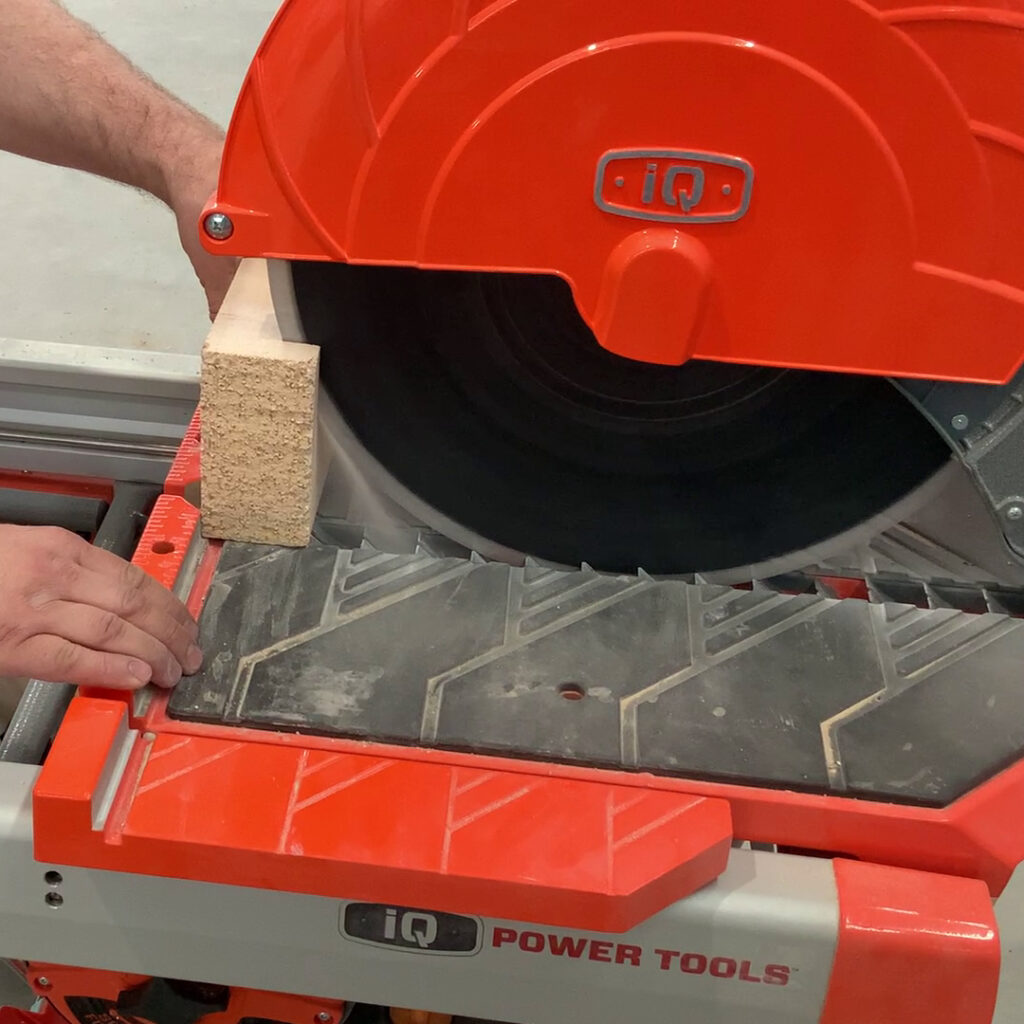
Conclusion
As you can see: the possibilities are very diverse and the various tools have their advantages and disadvantages. We hope that this article has given you a good overview.
Which tool you choose will probably depend heavily on the respective working conditions – but certainly also on your personal preference.
Which tool do you prefer to work with? What are your experiences? Feel free to share them with us!
More blog posts

REMUS baking stove set – the assembly is that easy.
Our REMUS baking stove set has a deliberately compact design, can be flexibly extended if required and is also quick and easy to assemble. Below we show you how easy it is.

Wood-burning baking stove made of fireclay – the components
Which components are required when building a stove and what special technical features need to be considered? We will give you an overview below – from the foundation to the rain cover.

Processing mortar for stove construction
Processing mortar for stove construction Are you already familiar with our HM, HKM and PLUS universal mortars specially designed for tiled stove construction? Have you



